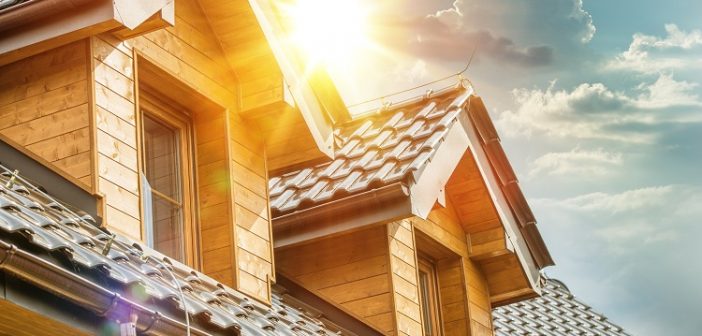Keep Cash in Your Pocket Instead of Paying High Utility Bills
Most homeowners and renters like you work from a monthly budget to manage their living expenses. You’ve probably carefully planned where your income goes each month, allocating specific amounts to your mortgage or rent payment, groceries, and home utilities.
If you find you need extra money for an unexpected expense, it’s fairly easy to opt for cheaper dinner ingredients for a while. It’s much harder to find ways to lower your monthly utility bills, especially if you need to run an air conditioner or heater in your home.
But there are actions to take to save money on your utility bills – and luckily for the environment, they help preserve energy, too. Take one or all of these steps toward lowering your monthly bills, and see how much money it frees up in your budget.
In the winter, bundle up indoors, and lower your thermostat.
According to the U.S. Department of Energy, for every degree you lower your thermostat in the winter, you can save one percent on your energy bill every eight hours. Considering there are 730 hours in a month, that could be a significant savings!
To save the most money, set your thermostat to the lowest possible temperature at which your family is still comfortable. Have everyone wear sweaters and slippers instead of turning up the heat, and incorporate throw blankets into your decor if anyone starts feeling too chilly.
Remember that your thermostat should never be set below 55 degrees. If it gets too cold, you
Dress appropriately for summer, and raise your thermostat.
When your residential air conditioning is on, you can save money by keeping the temperature closer to 75, and dressing appropriately for the temperature. Shorts and t-shirts will keep you cool, while you save big money on energy bills.
You can also raise your thermostat before you leave the house, so the air conditioner will kick on fewer times while no one is home. Then, lower it to a comfortable temperature when you return.
Use ceiling fans.
Your ceiling fan uses less energy than your whole-home heating and cooling system. Help keep your home a comfortable temperature by turning them on in all seasons.
In the winter, put your ceiling fans on reverse, so the blades turn clockwise. This will move warm air back down toward the floor – because hot air rises. Reverse the blades by using the switch at the base of the fan.
In the summer, your ceiling fan should run counter-clockwise to circulate cooler air.
Install a programmable thermostat.
If your current thermostat is completely manual, then you can’t adjust your home’s temperature when you’re out. A programmable thermostat allows you to create daily schedules so your heater or air conditioner will adjust the temperature exactly when you need it to.
You might also consider a smart thermostat, which is both programmable and learns your routine and sets itself automatically.
If you’re a renter, you can still use a programmable thermostat. It’s easy to install one; simply replace the manual thermostat before you move out.
Maintain your systems.
Taking good care of your heating and cooling systems can not only extend their lives, but they also can ensure they are working as efficiently as possible. And an efficient system is an energy-saving one.
Call an HVAC professional for annual maintenance on both systems, and change your air filters every month. Doing so can actually decrease the likelihood that you’ll need heater or air conditioner repairs.
Seal your drafty windows and doors.
Outdoor air streaming in the gaps in your windows and doors lets hot air in, in summer, and cold air in, in winter. Your HVAC system has to work extra to keep you and your family comfortable in your home.
If you feel air leaking around your windows and doors, you can add a foam seal to fill the gap. In winter, you can apply a plastic film around your windows. Find these materials at your local hardware stores, and see the difference they make reflected in your monthly utility bills.
Pull the curtains – open or closed.
In the winter, your house will feel warmer if you open the curtains and let the sun shine in. The sun will naturally help warm your home.
And in the summer, pulling the curtains closed will block the sun and help keep your home cooler.
Consider buying and installing heavy curtains, which are more up for the task than sheers or simple window blinds or roller shades.
Upgrade your HVAC system.
Over time, any heating and cooling system will start to wear out and become less and less efficient as the years go by. Although they can last about 15 years, they will decline in efficiency.
If you’ve noticed an increase in energy consumption, or if you’re forking over quite a bit in air conditioner or residential heating repairs, then it may be time to upgrade to a more efficient system. Although the initial purchase can be expensive, you’ll immediately see a decrease in your utility bills if it was sized and installed properly.
Start saving today.
It doesn’t take a large amount of money to lower your energy bills using simple methods – although taking care of your heating and cooling system is an investment.
If you want to see a difference in your family’s energy consumption, start trying these methods today for nearly instant results.





ks for sharing the article, and more importantly, your personal experience mindfully using our emotions as data about our inner state and knowing when it’s better to de-escalate by take https://kodi.software/ ing a time out are great tools. Appreciate you reading and sharing your story since I can certa
It is dependent on how well you care for it. I like to keep an eye on the house as a whole, so when it came to choosing a utility company, I spent a lot of time reading evaluations. You can, for example, go to firstenergy phone number . I’ve read a lot of comments and reviews, and I believe it will be beneficial, and you can quickly review this material.
You made a good point about windows improvement. This could reduce your heating bills by 30%! But sometimes sealing windows is not enough. Here are some things that signal it’s high time to replace them:
1. The gaps are too big.
2. Mold and rot.
3. Condensate.
4. You hear whistling in windy weather.
I see you mentioned lowing the temperature – that’s great. Even reducing the thermostat temperature by 1°C could save you £40 a year and I bet you wouldn’t even notice.